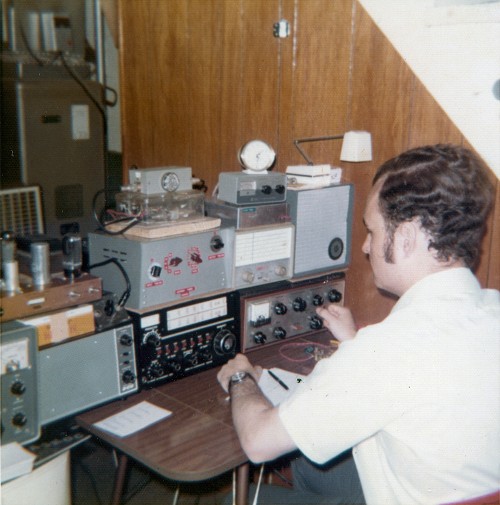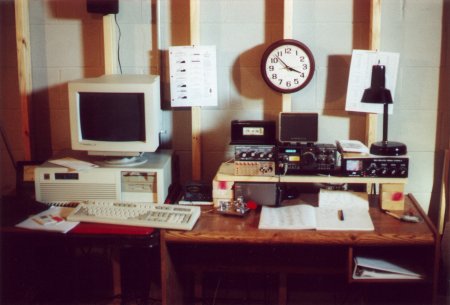In my new rating as Yeoman, I worked in the ships personnel office and was put in charge of doing all of the paperwork for re-enlistements, retirements, separations, discharges, the daily AWOL report, court marshalls, and whatever else came along. My most interesting job on-board ship was my assignment during GQ (General Quarters). Due to my rank, I had made second class Petty Officer [E-5] a few months prior to leaving Scotland, I was assigned to the Captain of the ship. When General Quarters was envoked, my job was to follow the Capatin around on the bridge of the ship and relay his orders over the ship's sound powered telephone system. This later lead to some interesting experiences.
On-board ship we stood 6 section weekend duty. I did not like ship-board life, it was a major change from my Scotland days. The dry dock in Boston was very close to Logan airport. On weekends when I did not have duty, I would walk to the airport, buy a ticket, and fly home to play radio.
Shown below is a photo of the station taken in December 1972,
just prior to getting my first SSB rig the Drake C-Line. I
operated
this station at home while I was stationed on-board the USS. Grand
Canyon.
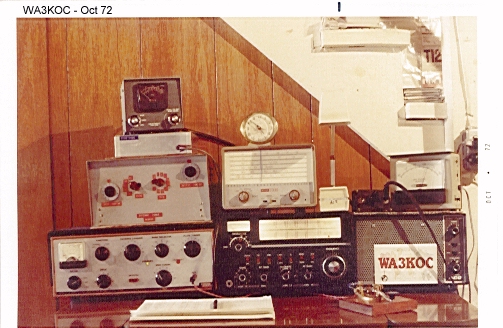 |
|
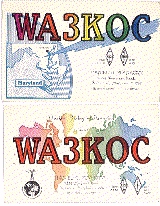 |
| WA3KOC fall of
1972 |
|
|
|
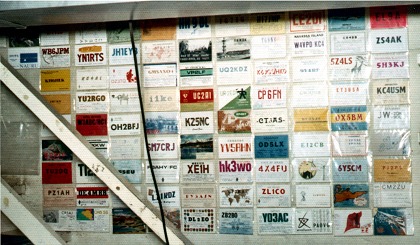 |
|
| WA3KOC August 1972
- Home for the weekend to play radio |
Late 1972 - DXCC
confirned |
After the ship's sea trails were completed in GITMO, I
returned to
Newport, Rhode Island in late April 1973. I continued to operate
from the
base club station keeping in contact with my amateur radio friends in
Baltimore. On August 23, 1973 I was separated from active duty.
I was
separated from the Navy 6 weeks early because the ship had been
assigned a new
home port in Mayport, Florida and was due to leave Newport before my
normal
separation date in October 1973. Just prior to being discharged,
I had ordered a Drake C-Line. It was waiting for me when I
returned home.
I had saved my military pay to purchase the new rig.
Immediately after returning home, I entered The Community
College
of Baltimore (formerly BJC) for a second time in September 1973.
I
enrolled in their electrical engineering program and in September of
1975
transfered to the University of Maryland at College Park to complete my
EE degree.
Below is a photo showing the station from 1976 to 1980.
New in this photo is a Murch antenna tuner modeled after the
Ultimate Transmatch,
a Heathkit power/SWR meter built from a kit, a home brew electronic
keyer with vibroplex paddle and an Ameco pre-amp on top of the keyer.
To the
right of the Drake C-Line is a homebrew power panel and 30 ampere
homebrew
power supply which powered an Icom IC-22 two meter FM rig (not shown)
along
with a 70 watt 2 meter amplifier (not visible). The rotor control box
in
front of the power supply rotated a pair of homebrew stacked 6 element
2
meter yagis for 2 meter FM. This period was during a minimum in
the
solar cycle when I worked a lot of 2 meter FM simplex. My best 2
meter
DX was Louisana, Florida, Canada (Ontario), and Nova Scotia all worked
on
146.52 MHz FM. Shortly after this picture was taken I purchased a
second
hand Heathkit SB-200 linear amplifier to help keep the DX coming on the
HF bands. I was attending college at the University of Maryland
working towards a degree in electrical engeineering and working part
time as an
engineering COOP student for the Navy at the Naval Surface Weapons
Center in White
Oak, Maryland an also attending evening classes while I was working.
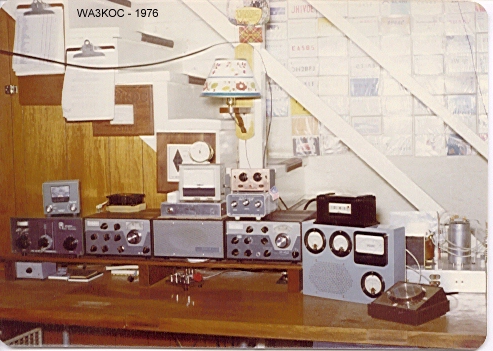 |
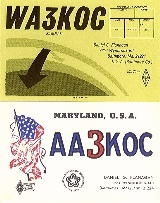 |
||
| Station setup from
1973 - 1975 |
In early 1977 I applied for a new callsign in the 70's
version of the vanity call sign program. The only requirement back then
was tenure as an extra class license holder. In March of 1977 I
was issued the call W3DF. See the link History of the
Original W3DF on the main page for more information.
From 1976 through 1983, I was active chasing DX and became involved in contesting after joining the Potomac Valley Radio Club which held their monthly meetings just a few miles from where I worked. I completed my degree in electrical engineering in December 1979. Upon graduation, I accepted a full-time position with the Naval Surface Warfare Center in White Oak, Maryland where I worked from 1976 until mid-1992. Since 1992 I have worked for NOAA on various projects including the NEXRAD pulse doppler weather radar system (1992-1994), the NOAA High Altitude Hurricane Surveillance Jet (1994-1996), the POES Project (formerly TIROS), a polar orbiting weather satellite (1996 to 1998), and most recently the GOES Project, a geo-stationary orbiting weather satellite from 1998 to present.
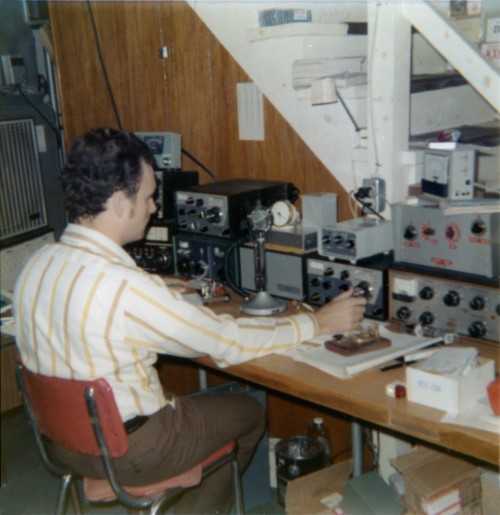 |
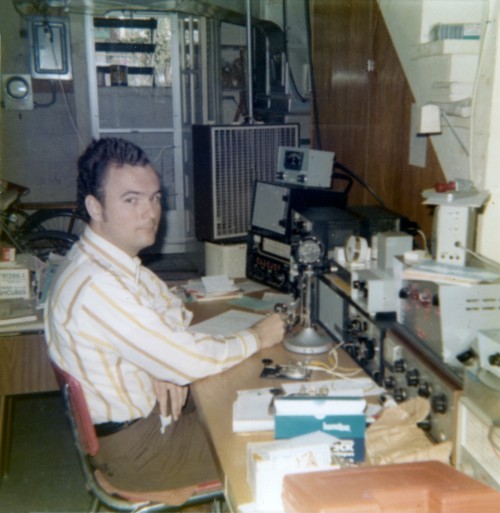 |
|
| Station setup from
1976 to 1981 |
W3DF station circa
1978 |
In 1980, I was married to my lovely bride Jackie. We
lived in an apartment in Baltimore from 1981 to 1983 so my ham
activites were limited. In 1983 we built a house in Westminster,
Maryland and started a family. I was intermittenly active on the
HF
bands until the end of 1983 and inactive from 1984 until mid 1997,
although I did do some sporadic HF operatring and regular 2 meter FM
operating during that period. From 1985 to 1997 computers
replaced amateur radio as a hobby while we were raising out two
children. I also enjoyed
photography during this time while taking photos of our children.
In May of 1997, I joined the Carroll County Amateur Radio
Club. Field Day was fast approaching and the club was looking for
CW operators so I volunteered to operate the CW station. Once I
sat down in front of the rig during Field Day, it took about 30
minutes to get my code speed back to where it was in 1983. After
Field Day, I decided it was time to get back on the HF bands.
|
|
|
|
| W3DF circa 1998
after returning to the airwaves |
In late August 1997, I purchased a Kenwood TS-130S from a club member, put up dipole antennas, and got back on the air chasing DX after a 13+ year absence. The photo at left is the station in 1998 consisting of a TS-130S, an MFJ antenna tuner, MFJ memory keyer, Autek audio filter, Vibroplex paddle, and my antique 286 PC. The basement shack was in the process of being finished and the setup was somewhat make-shift but functional. Once finished, I'll have a room which will be dedicated to the ham shack and the home computers.
The present QTH near Westminster, Maryland is a major improvement over the old east Baltimore QTH of the 60s, 70s and 80s. Instead of the postage stamp size lot I had back in Baltimore, I have 2+ acres of land to play with. My antennas, dipoles for 80 thru 10 meters at 35 feet at 30 feet, are out in the open.
Carroll County, Maryland is characterized by gently rolling hills and farmland. Over the past 20 years a lot of the farmland has given way to housing developments, but there is still plenty of open countryside. My view to the south is completely unobstructed. To the north, I am 10 to 15 feet from the peak of a hill.
The photo below-left is the view looking due south from the
antenna location. If you look closely at this photo you will see
a rainbow. The photo below-right is the view looking to the south
west.
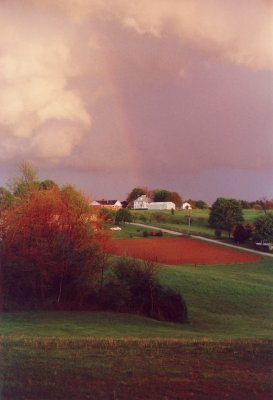 |
|
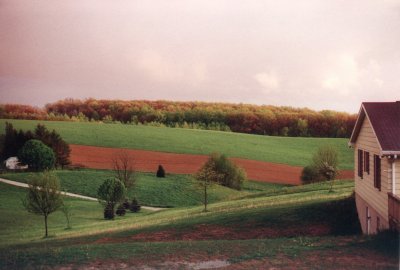 |
|
| View looking south |
View looking
south-south-west |
In March of 2000, I added a Kenwood TS-870 to the
station. The TS-130S, which I have used since 1997, is now
dedicated to PSK-31 operation. My interest in PSK-31 was peaked
by the article which appeared in the May 1999 QST. Since December
1999, I have added PSK-31 to my modes of operation. In the fall
of 2000, I became active on 160 meters (the TS130S did not have
160 meters) after installing an inverted-L.
Each year since then I have improved the antenna by adding more radials
and getting more of it's length vertical. My goal is to work DXCC
on topband.
In June of 2001, I upgraded my antenna farm a second time. I purchased an AB-577 military mast and installed a five band, 2 element quad on the mast. For more details on this see The Quad Project on the main page. In December of 2002 I added an Ameritron AL-1200 amplifier. After being back in the hobby for 5 years, I now have a fully equipped HF station operational on 160 through 10 meters. Most of my on-the-air time is spent chasing DX and ragchewing. You will occassionally find me on PSK-31.
Below are some of my more recent QSLs. The cards at bottom center are the ones I use today. Work me and I'll send you one. For more QSLs, see my QSL Gallery.
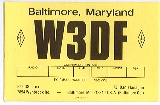
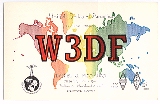
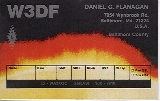

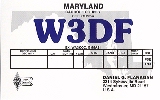
 Ham Radio Nostalgia
Ham Radio Nostalgia
